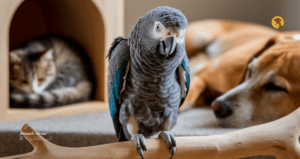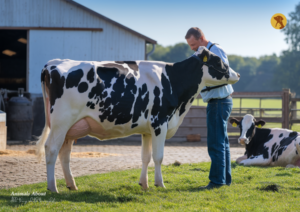Whether you’re an avid hiker, a backyard birdwatcher, or someone who simply enjoys peaceful walks in nature, it’s vital to understand the sick wild animal signs that could spell danger. Wild animals can be fascinating, but when their behavior turns unusual or alarming, it could indicate serious health issues—posing risks to people, pets, and even other wildlife.
⚠️ Sick Wild Animal Behavior: Key Signs to Watch
Wild animals are instinctively shy. If they suddenly act bold or bizarre, pay attention. Recognizing sick wild animal signs can prevent accidents and help limit the spread of diseases like rabies, distemper, or mange.
1. Unusual Wild Animal Behavior That Stands Out
One of the first warning signs is an animal acting outside its normal behavior pattern. If a wild animal is wandering aimlessly, active during the day (when it’s typically nocturnal), or showing no fear of people, it may be seriously ill.
These behaviors often indicate neurological disorders, poison ingestion, or viral infections. Nature has its rhythms. When animals break those patterns, it’s your cue to stay alert and steer clear.
2. Approaching Humans or Pets During Daytime
Healthy wildlife usually avoids contact. If a wild animal approaches you, your family, or your pet in broad daylight, that’s an immediate red flag. Approaching humans or daytime activity in species like raccoons, foxes, or skunks is not just strange—it’s dangerous.
Often, these animals are either sick or disoriented. They may be suffering from brain infections or could have lost their fear due to injury or starvation. Always prioritize wildlife safety for humans and pets in these scenarios.
3. Limping, Disorientation, or Visible Injuries
Injured or diseased animals often exhibit limping or disorientation. If an animal appears wobbly, circles without direction, or drags a leg, it could be experiencing severe health issues such as distemper, poisoning, or even trauma.
You may also see wild animals with visible injuries, like open wounds, protruding bones, or matted fur with blood. These conditions can make them more aggressive or desperate—posing a real threat if they feel cornered or threatened.
It’s heartbreaking to witness, but your role is not to help—it’s to report.
😷 Recognizing Diseased Animals in the Wild
Learning how to spot sick wildlife behavior isn’t just about avoiding bites. It’s also about stopping the spread of diseases that could affect your pets or local ecosystems.
1. Foaming at the Mouth and Other Rabid Animal Symptoms
Perhaps the most terrifying warning sign is foaming at the mouth, a telltale indicator of rabies. Rabid animals may also exhibit erratic behavior—charging suddenly, becoming aggressive without provocation, or wandering aimlessly. These rabid animal symptoms are deadly for both humans and pets.
Rabies attacks the nervous system. It alters behavior drastically. The sooner you recognize these signs, the better you can protect your loved ones.
2. Identifying Threats from Wild Animals: Signs of Distemper and Mange
While rabies gets most of the headlines, diseases like distemper are equally serious. Animals with distemper may shake, appear drunk, or even become extremely quiet. On the other hand, mange can make animals appear skeletal, with fur loss and crusty skin.
These signs often mimic other conditions, making them hard to diagnose from a distance. But when in doubt, stay out of reach and contact animal control.
If you’re wondering how to tell if a wild animal is dangerous, recognizing the sick wild animal signs is the first step in staying safe and protecting your local environment
3. Dangerous Wildlife Signs You Shouldn’t Dismiss
Sometimes the danger is silent. A fox pacing back and forth at noon, or a raccoon sprawled on your porch, might seem unusual but harmless. Yet, these can be strong wild animal warning signs that demand action.
Whether it’s unusual posture, bloody discharge, or extreme lethargy, such behaviors should always trigger concern. Don’t second-guess your instincts—trust them.
📢 When to Report Wild Animals and Why It Matters
Knowing when to report wild animals can save lives. If you spot a wild animal that matches any of these warning signs, contact your local wildlife authority, animal rescue, or non-emergency police line.
Report If You See:
- Foaming at the mouth
- Daytime activity in nocturnal animals
- Sudden aggression or lack of fear
- Limping, confusion, or staggering
- Visible signs of injury or illness
- Wild animal attacking pets or humans
Never attempt to trap or treat the animal yourself. Wildlife professionals are trained to handle these situations safely.
🐾 Avoiding Contact with Sick Animals: What You Can Do
You can’t control nature, but you can control your exposure to it. Avoiding contact with sick animals isn’t just about crossing the street—it’s about taking real steps to reduce encounters.
1. Secure Food and Trash
Keep trash bins locked. Don’t leave pet food outside. These attract animals—healthy or sick. Once an animal associates your home with food, the risk of future encounters increases.
2. Protect Your Pets
Keep dogs on a leash during walks. Don’t let cats roam freely. Your pet doesn’t know the difference between a healthy squirrel and a sick one, but you do.
3. Educate Your Community About Sick Wild Animal Signs
Many incidents occur because people simply don’t know the signs. Share this article. Tell your neighbors. Recognizing diseased animals isn’t just useful—it’s lifesaving.
🌲 Wild Animal Health Risks You Might Overlook
Even indirect contact with a sick wild animal can be harmful. Droppings, saliva, or urine can spread diseases. Wild animal health risks include not just rabies, but also leptospirosis, toxoplasmosis, and parasitic infections.
Never let children play near dens, nests, or areas where animal droppings are found. Always wash your hands thoroughly after working in the yard or handling trash.
🧠Stay Smart, Stay Safe, Stay Compassionate
The world of wildlife is beautiful, complex, and sometimes dangerous. But by learning to recognize sick wild animal signs, you can enjoy nature while protecting what matters most—your safety, your pets, and the health of your local environment.
Be aware. Stay curious. And remember—unusual wild animal behavior is not just interesting, it’s informative. It tells a story you need to hear.
FAQ
Look for unusual behavior such as disorientation, aggression, or foaming at the mouth. Sick animals may also approach humans or show signs of visible injury.
Signs of dangerous wildlife include unprovoked aggression, erratic movements, and foaming at the mouth—often associated with rabies or other diseases.
No, always avoid contact with sick animals. They may be a health risk and could become aggressive if threatened.
Disclaimer: The information provided on animalsabout.org is for educational purposes only. Always consult local wildlife experts or authorities when dealing with wild animals that appear sick or dangerous.







